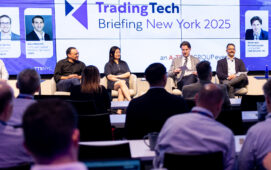Thomson Reuters is building out its Accelus governance, risk and compliance (GRC) platform with an updated user interface for Accelus Risk Manager, additional workflow tools and further functionality including the company’s BoardLink portal, enhanced disclosure capabilities and e-learning.
Thomson Reuters’ GRC business was established about three years ago, with the Accelus brand following about six months later and now aligning Accelus Risk Manager, Compliance Manager, Policy Manager and Audit Manager on one platform. Recent additions include eGRC and Auto-Audit, which are designed to connect and simplify GRC workflow.
The enhanced user interface, or what Thomson Reuters calls a UI UX – user interface, user experience, has emerged from the company’s Usability Lab as a more intuitive front end with more visualisation tools and improved reporting that allows risk executives to communicate their organisations risk position to the business and board more effectively.
The UI UX will be developed across the platform to deliver consistent access to all the solutions it supports, while a single underlying data structure provides data consistency across solutions. The user interface is being rolled out to existing customers and will then be made available to new customers.
According to Andrew Neblett, Thomson Reuters managing director of enterprise risk management, governance and risk and compliance, “The simplified and intuitive user interface for Accelus Risk Manager is another step in the structured journey of our GRC platform, Accelus. By connecting the best our proven solutions have to offer around a single, flexible data model, Accelus delivers the connectivity and performance organisations need from their GRC programmes.”
Accelus has been designed as a modular solution, allowing clients to use the whole platform or select specific capabilities to solve targeted business problems. With the major components of GRC on the platform, Thomson Reuters is working to make them more consistent and connected to improve performance. Neblett says: “Our customers want a broader view of risk, so we are aligning the components on the platform to work together closely and work with a consistent underlying data structure and consistent user interface.”
Taking this holistic view across GRC a step further, Thomson Reuters is in the process of adding its BoardLink portal to the platform, as well as enhanced disclosure capabilities and e-learning. The relationship between regulatory intelligence and workflow for regulatory change management is also being developed, while Neblett says additional modules with capabilities adjacent to those on the platform should be available in the next three to six months.
Subscribe to our newsletter




